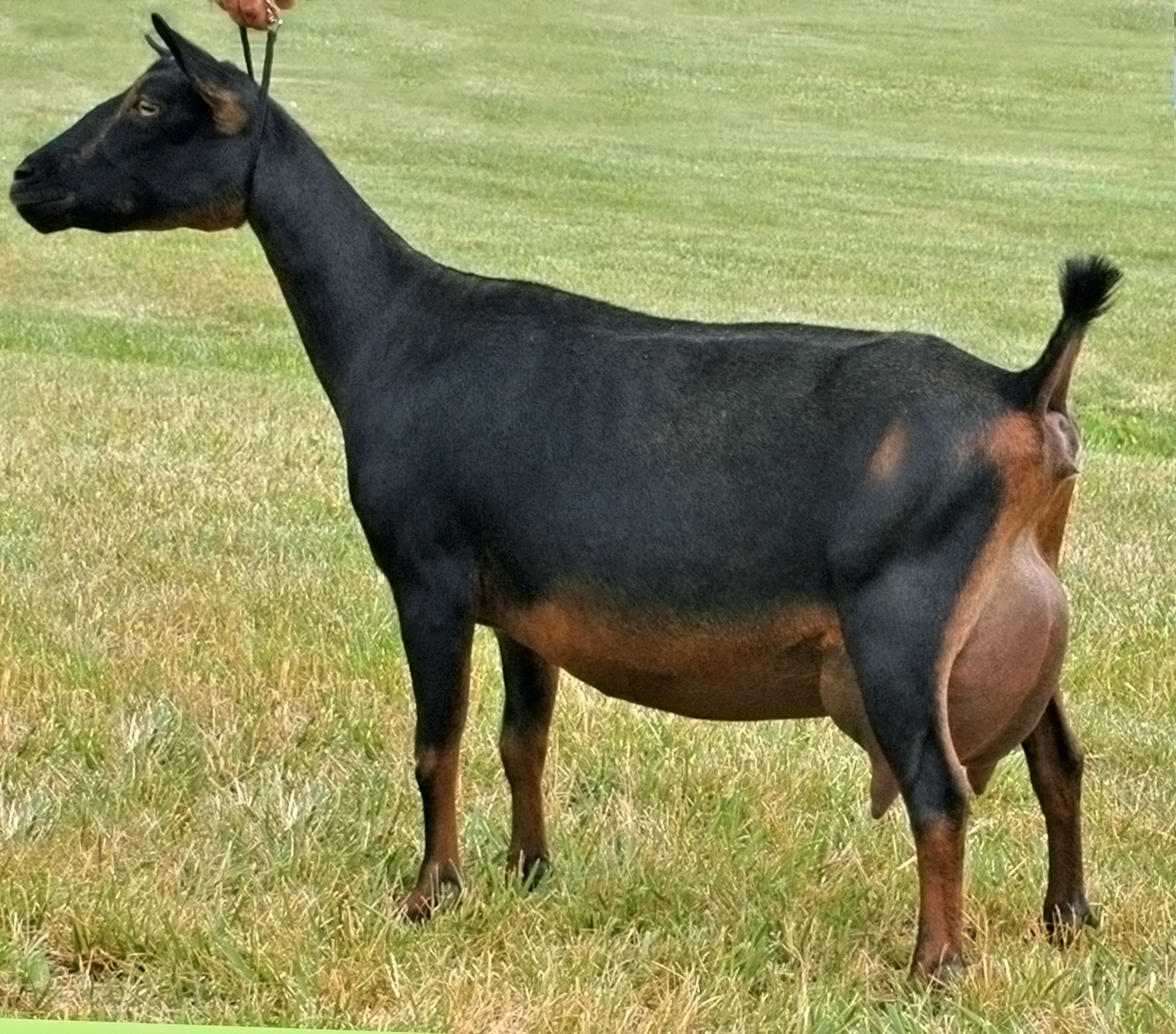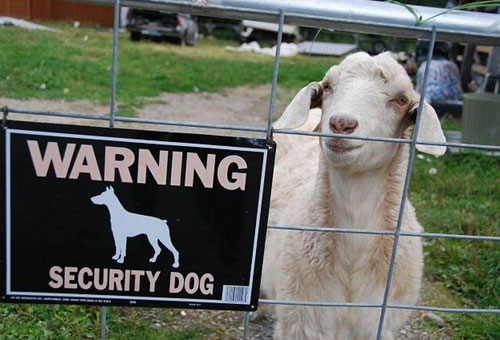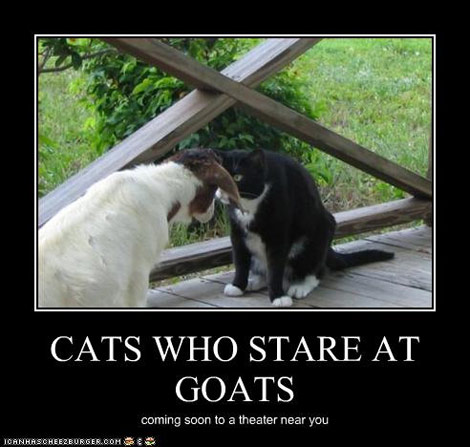Back in 1998 when we started raising goats, we only had pygmies. Throughout the years, we have slowly added Nigerian dwarfs to our herd (which is now about half and half of each breed). When breeding, we only kept the best, improving our lines. Ever since we started raising them, we have always done well with them. The judges liked them and we were often complemented on comformation but we never had flashy colors. They were also mostly solid colors like our pygmies.
While solid colors are perfectly acceptable when it comes to judging, flashy goats are cooler to look at. The Nigerian dwarf goat breed standard allows the flashy colors that are not acceptable for pygmies. Here some examples of such colors from other herds:
Soon, we were not only looking for conformation, but we hoped to find some flashy color too. We added our first colorful does (Promise and Payton) in February, 2010.
I know it's kind of hard to see their color because they are in show clips, but they are both beautiful buckskin colored does. Then, kidding season came around and we learned that our buck, Frankie, had some color in his background.
Although he doesn't look very colorful himself, he gave us two beautiful buckskin bucklings.
Then, one day late October 2010, we looked out into the barn yard and noticed that Promise and Payton were growing udders; the bucks had escaped the buck pen! Promise had a doe and a buck; we kept the doe. Her dad was Pistachio, a pretty black and white buck. We named her Pistachio Dream. Here she is:
Two weeks later, Payton kidded a doe and buck also. We kept the doe. Her dad turned out to be Frankie. Here is Paisley:
So, while over-all correctness is our main goal here, why try to also add some eye-candy to the herd and I believe we are off to a good start!
Saturday, March 26, 2011
Friday, March 18, 2011
Pygmy Goats vs. Nigerian Dwarf Goats (Lots of Pictures!)
When raising both pygmies and Nigerian dwarf goats, we are often asked what the difference between the two breeds are. To non-goat-people, they look very similar, but when you know what to look for, they are very easy to distinguish. Here are some characteristics of each breed:
General Appearance:
Pygmy goats are bred to be cobby or stout. Their face should have a dish. Their necks should appear muscular along with the rest of their body. They need to have a wide chest floor with legs squarely set.
Nigerian dwarfs' appearances should be very similar to that of a full-size dairy goat. Ears need to be upright and their faces should be either straight or have a slight dish. They may be disqualified from a show for being over-sized. Blue eyes have been introduced into many lines lately. They will not be disqualified for having them, but will not be placed any higher because of them. Some people just like the blue eyes.
Coloring
A pygmies color should be solid. Different solid colors they can be include gray agouti, light caramel, dark caramel, and black. There are other acceptable forms of these colors. Belly bands are also accepted. Any other markings are considered mismarks.
A Nigerian dwarf on the other hand can be any color. They may be a solid color like pygmies, a combination of three colors, and anything in-between.
Bred For...
Pygmy goats were once bred for meat. They are now mostly bred for show and pet. The breed originated from Africa.
Nigerian dwarf goats were bred for milk and still are. They are also bred for show and pet. The advantage to having a dwarf to other dairy goats are their size. They eat less and take up less space then a full-size goat and a good milking doe can produce almost as much as a full-size goat.
General Appearance:
Pygmy goats are bred to be cobby or stout. Their face should have a dish. Their necks should appear muscular along with the rest of their body. They need to have a wide chest floor with legs squarely set.
Coloring
A pygmies color should be solid. Different solid colors they can be include gray agouti, light caramel, dark caramel, and black. There are other acceptable forms of these colors. Belly bands are also accepted. Any other markings are considered mismarks.
A Nigerian dwarf on the other hand can be any color. They may be a solid color like pygmies, a combination of three colors, and anything in-between.
Bred For...
Pygmy goats were once bred for meat. They are now mostly bred for show and pet. The breed originated from Africa.
Nigerian dwarf goats were bred for milk and still are. They are also bred for show and pet. The advantage to having a dwarf to other dairy goats are their size. They eat less and take up less space then a full-size goat and a good milking doe can produce almost as much as a full-size goat.
Now, after reading this, can you look at a pygmy and NDG and tell them apart? Well, test yourself on the following pictures. Which is a pygmy and which is a Nigerian?
Don't forget to visit our website at calicopatchfarm.com if you haven't already!
Thursday, March 3, 2011
Wednesday, March 2, 2011
4-H; Get Involved!
About this time every year, 4-Hers across America meet with their clubs and get ready for another great year. This is my 4th year in 4-H and I am so glad I joined! The people in my club (Little Farmers) are amazing and offer endless advice and help. I have learned so much from 4-H and it has made me a better goat owner. At sometimes, the books can seem boring, but if you really read what they have to say, they teach you a lot. Then, everything that I have learned throughout the year and from the book gets judged in the showmanship class at the fair in August. In showmanship, they judge you on how you handle your animal, goat body parts, breed standards, and scoring of the animal. Because of the books and friends from my club, this year, at both shows that I went to, I was Master Showman. I owe those wins to 4-H.
Most people think that 4-H projects only include animals, but they don't. Other projects include things like sewing, knitting, woodworking, bee management, wildlife, pets, archery, gardening, fishing, and many, many more! If you are considering joining 4-H, go for it! You won't be sorry. Plus, it looks good on your college application!
Tuesday, March 1, 2011
2011 Kidding Schedule
Here is a list of our up coming breedings and kiddings. We tried to get due dates for as many does as possible, but not all have exact dates.
*****
Does bred to Frankly My Dear (NDG)
(pictured above)
Rosalie (NDG)
Due 5/5/11
Danni (NDG)
Due 4/28/11
Pye (Pygora)
Due Mid-May
*****
Does bred to Titan (NDG)
(pictured above)
Wonder (NDG)
Due 4/27/11
Alice (Silky Fainting Goat)
*****
Does bred to Pogo (Pygmy)
(pictured above)
Karma (Pygmy)
Due Mid-May
Bella (Pygmy)
Due Mid-May
Charlotte (Pygmy)
Due Mid-May
Scarlet (Pygmy)
Due 4/25/11
*****
Does bred to Sterling Silver (Pygmy)
(picture above)
Oreo (Pygmy)
Due Mid-May
Jane (Pygmy)
Due Mid-May
*****
Price Estimates For 2011 Kids:
Purebred Doeling: $125-$150
X Bred Doeling: $75-$100
Purebred Buckling: $100-$150
Purebred Wether: $75
X Bred Wether: $50
If you purchase more than one kid from us, each kid
after the first will have a $25 discount.
If you are possibly interested in a kid from one of the above breedings,
please email us at calicopatchfarm@yahoo.com and let us know. We will not require a deposit on
any unborn kids because the kid you want might not be born. If the kid you
want is born and is available for sale, we will then discuss payment. If you
know that you are looking for a kid but you aren't picky about which
breeding it comes from, we can add you to the General Waiting list. Once
again, no deposits are required.
For more info on each breeding, please visit the full breeding schedule at
Subscribe to:
Posts (Atom)
































